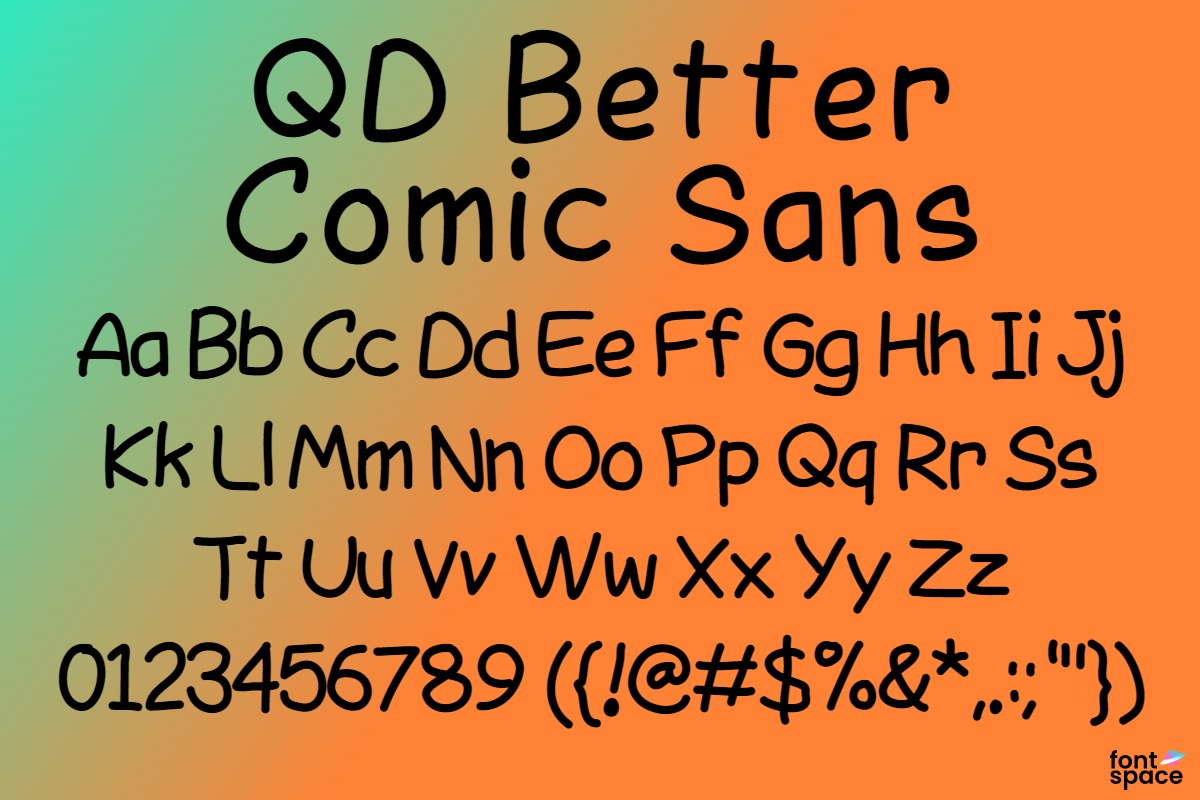

And adds: “People did not have much experience, and so they just picked what was different.” Due to its appearance, Comic Sans began to gain adoption quickly.Ĭonnare said when meeting people and talking about Comic Sans, surprisingly, he received confessions regarding the fanaticism for his creation. “This was the first time that people had a choice, so they were picking crazy things because they could do anything,” he says. According to Connare, when computers became the norm in homes, users began to have a possibility that they lacked before, that is anyone could choose from a variety of sources to personalize their documents. Choosing it is problematic because of the hatred it brings. I don’t think it was created for serious documentation”, said Barbara Chaparro.Ĭomic Sans is a very particular case. “What is clear to typographers is that Comic Sans is a sans typeface, designed for informal, casual use and for material similar to a comic book. Sans fonts, by not having these serifs, look more casual than serifs.
#Comic sans font professional#
Therefore, professional documents tend to use formal fonts. The terminations at the ends of the antlers reflect elegance to the average eye. Maybe that’s why we linked them to formal writing,” suggests those who led the research. “Historically, serif fonts were used for business documentation. According to Chaparro, this implies that humans have the ability to specify when a font is appropriate for a given context. Later studies showed when having to decide on the suitability of a typeface for a formal document, alternatives classified as “readable” or “beautiful” are preferred over the “emotional” or “noisy” ones. In the early 2000’s, Barbara Chaparro led an investigation at Wichita State University, Kansas, with results showing that humans perceive the characteristics of type families in three main aspects: “robustness and masculinity”, “beauty” and “emotion,” said Chaparro. The situation magnified in such a way that when Connare asked to give a conference in the London Museum of Design, he received complaints arguing that he should not be there. This initiative drew attention from designers all around the world, which started to raise the voice criticizing and mocking the controversial font. In 2002, Dave and Holly Comb, both graphic designers, started the movement “Ban Comic Sans”. Unexpectedly, the prevalence of Comic Sans rose and the font started to appear in formal documentation, billboards, posters and advertising. On that note, David Gibbons (creator of Watchmen) said: “I think the Comic Sans font is dreadful”.įun fact: Comic Sans did not meet the deadline to appear in Microsoft Bob 1.0, and Bob 2.0 was never published. In addition, it was designed manually due to European copyright laws and that is why it does not look or feel like any other typeface used in comics. It wasn’t made for everybody to like it”, said Connare. “My original idea was it was going to be used for kids. He created a typeface which looks fun and friendly, inspired by the typefaces used in comic books and designed to have a handwritten look and feel and targeted at younger people.
#Comic sans font windows#
Type designer Vincent Connare designed Comic Sans to be used in the dialog balloons of a little animated dog who will help first time users to navigate the Windows interface.
#Comic sans font Pc#
The intention of Bob was to facilitate the experience using Windows on PC and make it more intuitive. In 1995, Microsoft published a new program called Bob. The users can check out all the new fonts by adding a text to a Story and then using the interface element that appears above the keyboard to switch between them.“Comic dogs don’t talk in Times New Roman”, thought Vincent Connare. “I couldn’t believe people could get so worked up about a font.” “The level of hatred was amazing and quite funny,” Connare told The Guardian in 2017. With new stencil and serif options Instagram has added a typeface that looks a lot like the "world's most hated font", Comic Sans.Ĭreated by former Microsoft typographer Vincent Connare in 1994, Comic Sans is legendary. With four new fonts Instagram's typographic choices have already caused some stir. As Reels aka Facebook's answer to TikTok is finally launched -the new feature is built into Instagram-, the social network adds more fonts for those who love Instagram Stories.


 0 kommentar(er)
0 kommentar(er)
